In astrophotography, while light frames capture the celestial object itself, several other image types of images are used for calibration: dark frames, flat frames, and bias frames. These additional images help remove unwanted noise and artifacts, leading to cleaner and more accurate final results.
Unlike dark frames that target heat-related noise, bias frames capture a different kind of internal camera noise – sensor readout noise. This electronic noise is independent of exposure time or temperature and manifests as a constant bias across all the sensor’s pixels. By subtracting bias frames from light frames, this inherent electronic signal is essentially removed, leading to cleaner and more accurate imaging data.
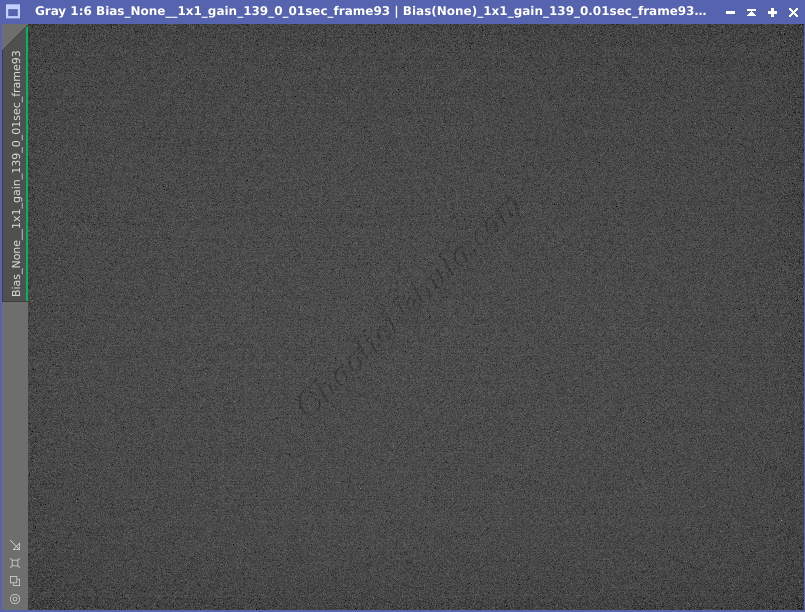
Within this single bias frame, it is possible to see a random noise pattern.
This noise can easily be subtracted (removed) from images during the preprocessing phase of astrophotography. Astrophotography image processing software subtracts the bias frame’s electronic noise from each light frame (light frames are the images taken of celestial objects). This process effectively removes the unwanted noise, revealing a cleaner and sharper image of the object.
Capturing
Bias Frames
Capturing bias frames requires a similar process to capturing dark frames, the light is completely blocked from reaching the camera sensor. However, bias frames differ in that the exposure duration is as fast as possible for the camera.
Bias frames are concerned with electronic camera noise. Short exposures are able to capture the electronic noise while avoiding the other type of noise associated with longer duration exposures (which are handled by dark frames).
To reap the benefits of bias frames, capture many (typically 100-250) bias frame images with the same gain, offset, binning, and camera temperate (if the camera is equipped with a TEC cooling capability).
For example, when capturing narrowband images (hydrogen-alpha, oxygen-III, and sulfur-II), two sets of bias frames are captured. And when capturing broadband images (red, green, and blue), two additional sets of bias frames are captured
| Type | Duration | Binning | Gain | Offset | Temp |
| Narrowband | .01 seconds | 1×1 | 200 | 139 | -10C |
| Narrowband | .01 seconds | 1×1 | 200 | 139 | -30C |
| Broadband | .01 seconds | 1×1 | 139 | 21 | -10C |
| Broadband | .01 seconds | 1×1 | 139 | 21 | -30C |
Two different temperatures are used, which equate to summer and winter astrophotography.
All of these parameters can easily be setup in astrophotography image capturing tools like N.I.N.A. and Sequence Generator Pro.


Processing
Bias Frames
Once the 100-250 bias frames are captured, they need to get integrated into a single master bias image. Within PixInsight, this can be automated by using the Weighted Batch Preprocessing Script or manually. Details on the automated approach are found in the following guide.
For manual integration, the PixInsight Image Integration process (Process – Image Integration – Image Integration) is used.
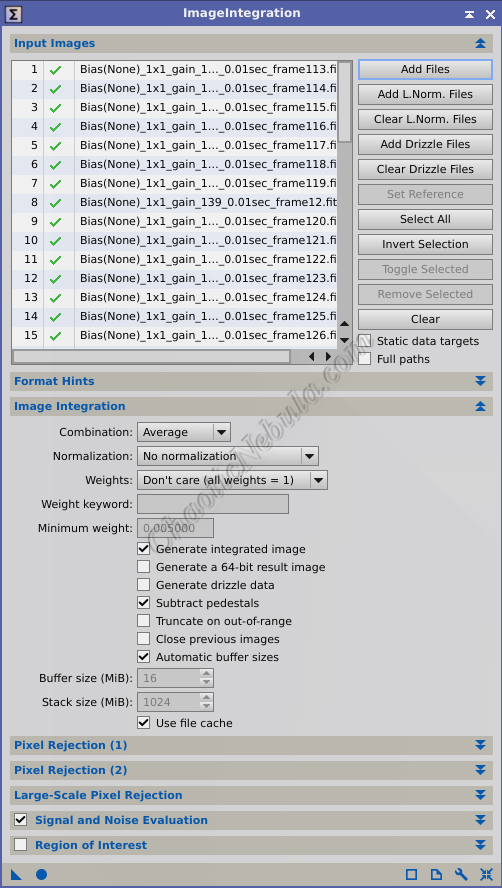

The settings to use to create a master dark frame are as follows:
- Image Integration
- Combination: Average. Averaging multiple bias frames helps to smooth out random noise present in each individual frame.
- Normalization: No normalization. Normalizing the data would alter the electronic noise characteristics the bias frames are trying to capture.
- Weights: Don’t care (all weights = 1). By treating each frame equally, the final master bias frame is less susceptible to the influence of outliers or anomalies present in individual frames
- Generate integrated image: Enabled
- Pixel Rejection (1)
- Rejection Algorithm: Winsorized Sigma Clipping. It is the optimal rejection algorithm for large sets of images.
- Normalization: No normalization
- Clip low pixels: Enabled. Helps mitigate the influence of extreme values in the darker pixels.
- Clip high pixels: Enabled. Helps mitigate the influence of extreme values in the brighter pixels.
- Sigma low: 4.00. Any pixel value more than 4 standard deviations below the mean will be considered outliers and potentially clipped
- Sigma high: 3.00. Any pixel value more than 3 standard deviations above the mean will be considered outliers and potentially clipped
- Winsorized cutoff: 5.00. Establishes percent limits on how many pixels can be cut at the low and high end. A cutoff of 5% would indicate that the lowest and highest 5% of values in the dataset will be replaced with values at the 5th and 95th percentiles, respectively.
This process creates a master bias frame.
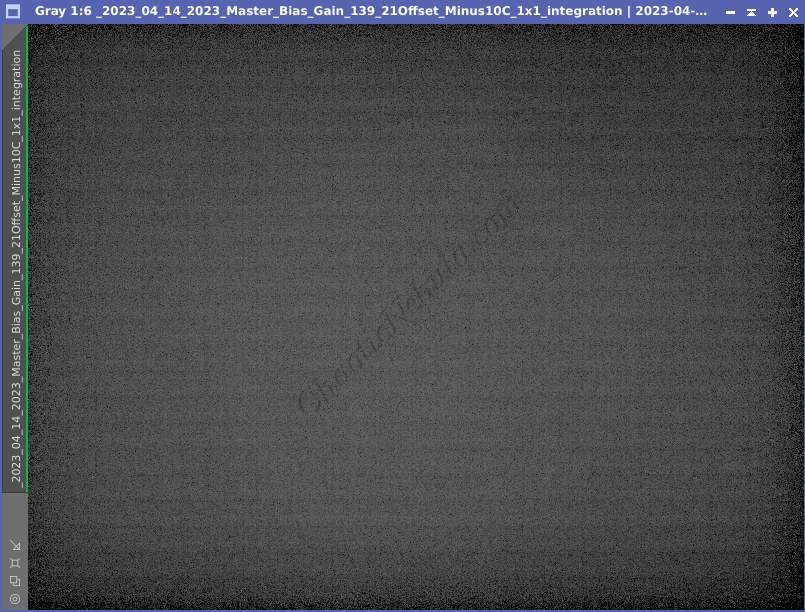
When this gets applied, each light frame has the bias frame subtracted.
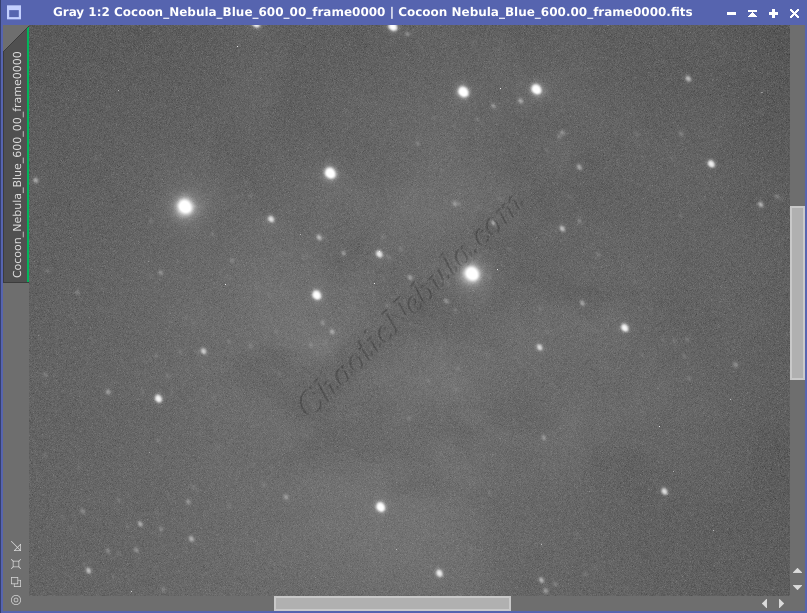
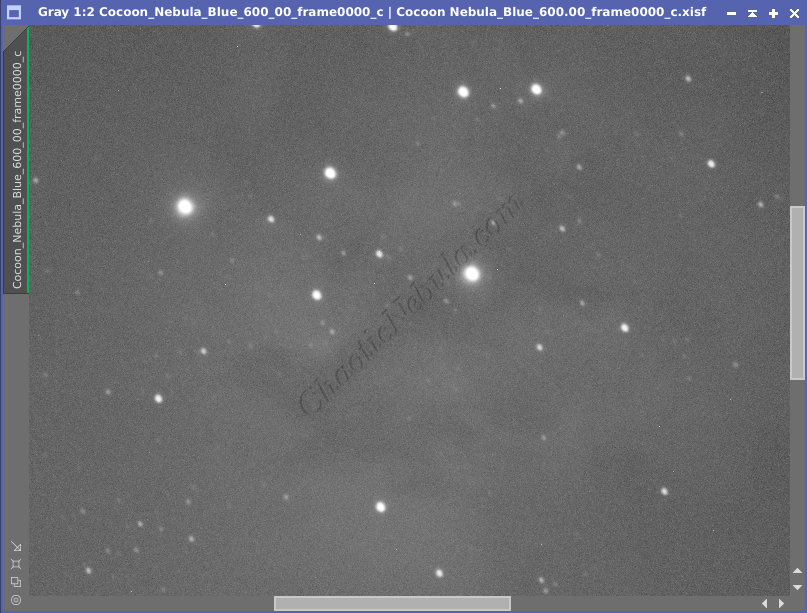
From the example, the bias subtracted frame has a slightly different brightness level than the baseline image.
Tips
Capturing bias frames is an important calibration frame in astrophotography to help remove electronic noise from the final image. Here are some tips to ensure effective bias frame captures:
- Make sure no light is reaching the camera.
- Run the bias frame capture sequence during cloudy nights when the telescope is not being used.
- Rebuild the bias frame library every few years (2-3) because the camera’s sensor can change as it ages.
What’s Next
With a master bias calibration frame created, image processing can continue based on the respective workflow: